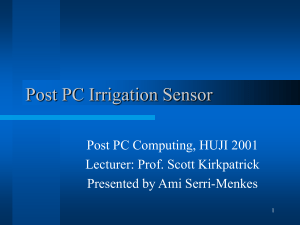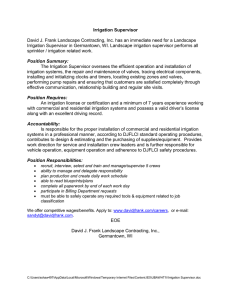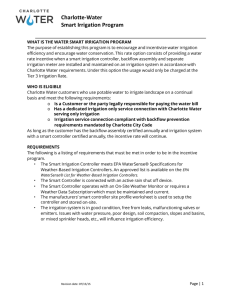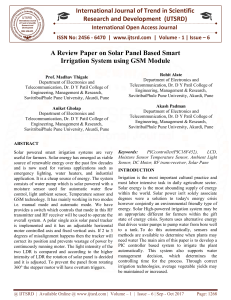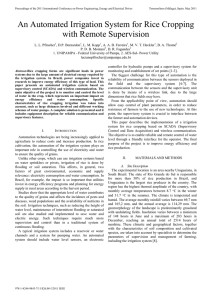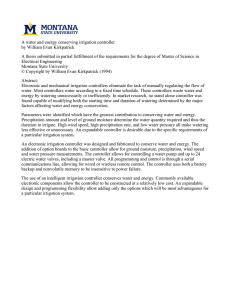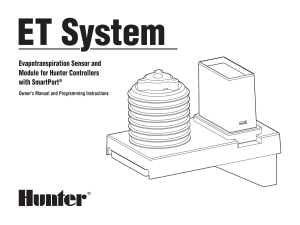Used Properly, Home Irrigation Can be Helpful Tool
advertisement
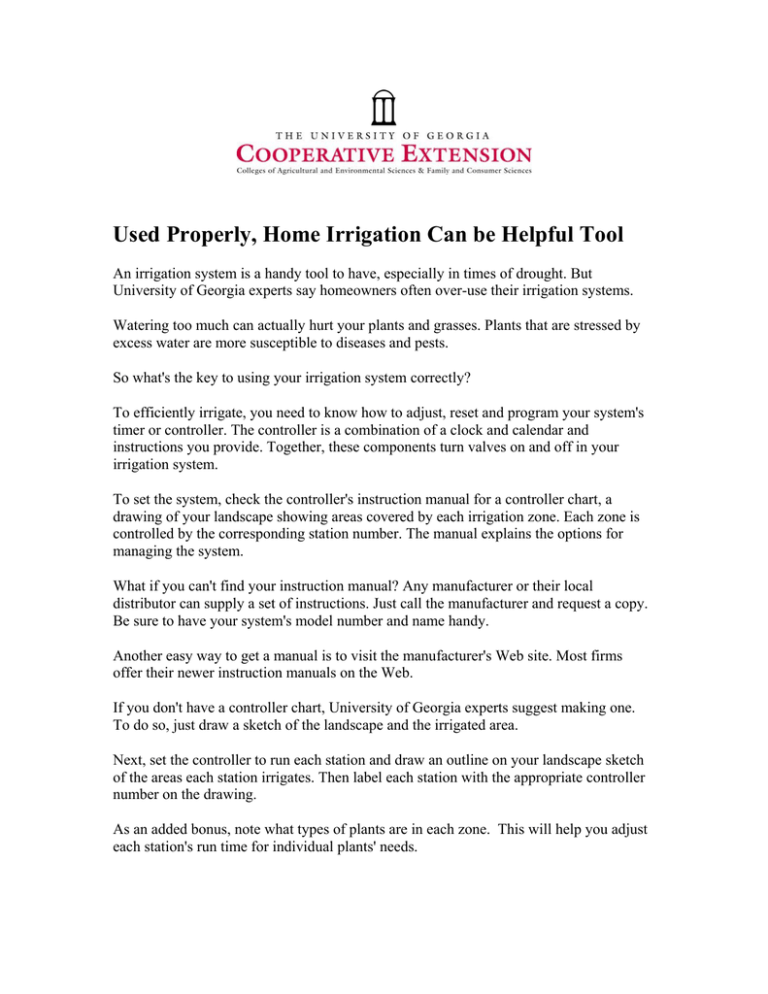
Used Properly, Home Irrigation Can be Helpful Tool An irrigation system is a handy tool to have, especially in times of drought. But University of Georgia experts say homeowners often over-use their irrigation systems. Watering too much can actually hurt your plants and grasses. Plants that are stressed by excess water are more susceptible to diseases and pests. So what's the key to using your irrigation system correctly? To efficiently irrigate, you need to know how to adjust, reset and program your system's timer or controller. The controller is a combination of a clock and calendar and instructions you provide. Together, these components turn valves on and off in your irrigation system. To set the system, check the controller's instruction manual for a controller chart, a drawing of your landscape showing areas covered by each irrigation zone. Each zone is controlled by the corresponding station number. The manual explains the options for managing the system. What if you can't find your instruction manual? Any manufacturer or their local distributor can supply a set of instructions. Just call the manufacturer and request a copy. Be sure to have your system's model number and name handy. Another easy way to get a manual is to visit the manufacturer's Web site. Most firms offer their newer instruction manuals on the Web. If you don't have a controller chart, University of Georgia experts suggest making one. To do so, just draw a sketch of the landscape and the irrigated area. Next, set the controller to run each station and draw an outline on your landscape sketch of the areas each station irrigates. Then label each station with the appropriate controller number on the drawing. As an added bonus, note what types of plants are in each zone. This will help you adjust each station's run time for individual plants' needs. If your system doesn't have a rain sensor, make plans to add one. A rain sensor detects rainfall and prevents the system from irrigating when it rains. This is add-on equipment, but it's inexpensive and usually pay for itself in water savings in a year or two. You can buy a rain sensor and install it yourself or have an irrigation contractor put it in. Either way, place the sensor where it's not covered by building eaves and doesn't collect irrigation water. It may be best to attach it to the roof edge where there aren't any interfering trees. Rain sensors are mandatory on any automated system installed in many metro Atlanta counties. Even if it's not mandatory in your area, it's still the easiest way to reduce automated irrigation system water waste. Whether you use an automated or a manual system, or just water with a garden hose, follow your county's or city's watering schedule. Be aware of the current outdoor watering restrictions in your community and use them as a guide. UGA experts say water based on your plants' needs, not because it's your designated day to water. Turfgrass needs water just as it begins to wilt. Signs include a change to a dull, grayish or bluish green and leaves that begin to fold. Annual flowers have shallow root zones, so they usually need to be watered more often than perennial flowers, which have deeper roots. Trees and shrubs have even deeper, more extensive roots. They use their roots to get water far underground and, as a result, can survive a long time without rainfall. Source: Rose Mary Seymour University of Georgia College of Agricultural and Environmental Sciences Cooperative Extension




